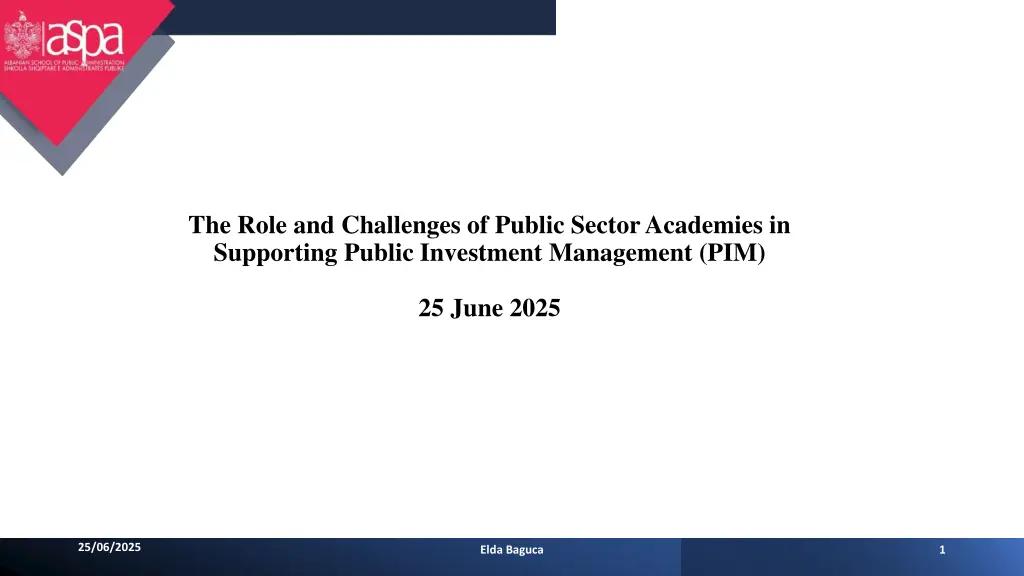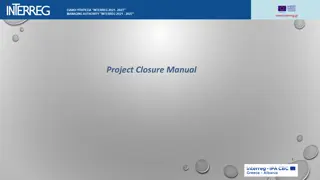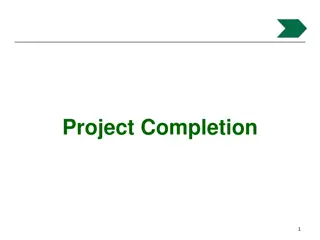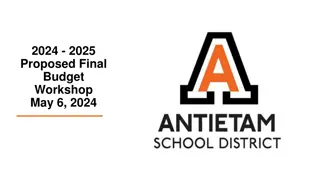
Public Sector Academies' Role in Investment Management Support
Discover the potential role, challenges, and achievements of public sector academies in supporting Public Investment Management (PIM). Learn about key issues identified and recommended strategies to enhance academy capacities in PIM.
Download Presentation

Please find below an Image/Link to download the presentation.
The content on the website is provided AS IS for your information and personal use only. It may not be sold, licensed, or shared on other websites without obtaining consent from the author. If you encounter any issues during the download, it is possible that the publisher has removed the file from their server.
You are allowed to download the files provided on this website for personal or commercial use, subject to the condition that they are used lawfully. All files are the property of their respective owners.
The content on the website is provided AS IS for your information and personal use only. It may not be sold, licensed, or shared on other websites without obtaining consent from the author.
E N D
Presentation Transcript
The Role and Challenges of Public Sector Academies in Supporting Public Investment Management (PIM) 25 June 2025 25/06/2025 Elda Baguca 1
Important topics The Potential Role of Academies in the Field of PIM Observations from Specific Trainings on PIM Key Challenges of Academies in Supporting PIM Recommended Strategies to Improve Academy Capacities in PIM 2
The Potential Role of Academies in the Field of PIM Training and certifying public officials at all levels; Ensuring continuous professional development; Offering dedicated programs for Public Investment Management (PIM), aligned with international best practices 3
Achievements 2024- March 2025 The Training of Trainers (ToT) program was conducted over four days in Tirana, from May 14th to 17th, 2024, by the EPDC team, with the participation of foreign experts Julia Piotrowska and Rafa Szporko. The training was part of our institutional collaboration and delivered by WB consultants, ensuring a tailored and practical approach aligned with our specific needs The project team reviewed the whole legislation in force related to PIM, coordinated with ASPA and MoF on the requirements for the new curricula and also provided input to the international PIM experts (below details) for the preparation of the ToT. In total with WB support 10 training sessions are organized- 373 Participants Training curricula and trainers will be used by ASPA on organizing trainings continuously 4
What are some issues that were identified Lack of knowledge about the legal framework (Council of Ministers Decision 887, Budget Law, Ministry of Finance guidelines); Uncertainty about the use of the F3 Form and the types of projects to which it applies; Incomplete or inaccurate forms with mismatches in relevant sections; Difficulty defining output and result indicators; Problems calculating indicative costs for various project components. 5
Key Challenges of Academies in Supporting PIM Lack of technical capacity and expertise in Public Investment Management (PIM) Limited technological infrastructure, including absence of modern distance learning platforms, simulations, and webinars Limited budget for developing digital content and interactive training materials (Insufficient financial resources) Lack of standardized and regularly updated training modules for PIM Better coordination with relevant line institutions Absence on follow-up mechanisms after training completion Lack of monitoring and evaluation mechanisms 6
Recommended Strategies to Improve Academy Capacities in PIM 1. Curriculum Development -Create dedicated PIM modules covering all phases of the project lifecycle. - Partner with international institutions to enhance content quality. 2. Trainer Capacity (ToT Program) -Train national trainers with strong technical skills and practical experience. -Provide continuous capacity building to keep trainers updated on methods and legal changes. 3. Digital Learning and Integration AI in the PIM Process: -Digitize training materials and develop online platforms with simulations and interactive tools. 4. Institutional Integration -Link PIM training to career advancement and performance evaluations of public officials. -Promote peer-to-peer learning and knowledge exchange. 7
Recommended Strategies to Improve Academy Capacities in PIM 5.Monitoring and Evaluation -Establish systems to assess training effectiveness and collect institutional feedback. 6. Sustainable Funding -Secure long-term funding for module development and trainer professionalization 7. Inter-Institutional Cooperation -Strengthen cooperation among training institutions to apply common standards in curriculum design and training delivery. 8. Experience and Resource Sharing Foster exchange of experience, curricula, and trainers among institutions to improve quality and consistency in training delivery. 8
Thank you for attention! Elda Baguca Adresa e-mail: elda.baguca@aspa.gov.al Num r kontakti: 0684112096 9






















